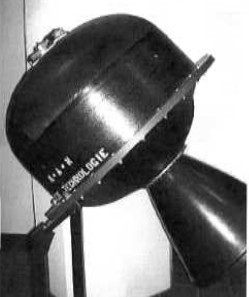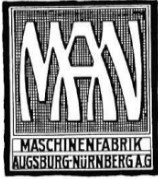Updated: 21-Sep-2020
MAN TURBOMOTOREN Gmbh
(Germany)
(See also MTU, Man-Turbo-Union).
After the Second World War, they settled in Munich, acquiring part of BMW in Munich-Allach, a factory that was in good condition after the war.
-Like Deutz, MAN, was also dedicated to the automotive industry, and had an independent experimental section with certain autonomy, which was the Man-Turbomotoren-Gmbh, in this case.
-In collaboration with Rolls-Royce, it first manufactured, under license, the RB-145, RB-162, RB-193 and RB-153, developing them jointly.
-The RB-153 was a vertical lift-off turbojet, and was installed on the first German vertical lift-off single-seater, the VJ-101D.
-They participated in the construction of the RR-Tyne engines for the Breguet Atlantic and Transall. Along with Rolls Royce, Hispano Suiza and FN.

“RB-153”
-Of their own production were the 6012L engines, an air generator with a single-stage centrifugal compressor and the 6022, in civilian and military version, a turboshaft with powers between 250 CV (in the -A2) and 400 CV (in the -B2).
-The -A3 gave 375 CV and was installed on the Bo-105 helicopter.
-In their international programs, as early as 1974 it collaborated with other European companies in the manufacture of engines such as solid fuel engines for satellite apogee maneuvers.

“MAN apogee engine”
-In particular, the one shown has a thrust of 900 KNs, carrying 317 Kg of fuel for 356 Kg of total weight, that is, the engine only weighs 39 Kg. Built with carbon fiber, which gives its lightness.
-The burning time is 40 seconds.
-During WWI, MAN made the Argus III under license at the Nuremberg factory and a Mercedes engine was made in Augsburg, perhaps the 160 HP one.

“Old MAN logo”
-The company was founded in 1898 through the merger of two small Nuremberg companies.
-Much later, around 1971, it acquired German Büssing and Austrian Steyr.


